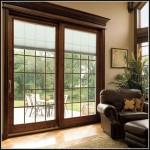Pennsylvania Bluestone Patio: A Comprehensive Guide
Pennsylvania Bluestone, a naturally occurring sedimentary rock quarried primarily in northeastern Pennsylvania and parts of New York State, is a highly sought-after material for creating durable and aesthetically pleasing patios. Its characteristic blue-gray hue, along with its inherent strength and slip resistance, makes it a popular choice among homeowners, landscape architects, and construction professionals alike. This article provides a detailed overview of Pennsylvania Bluestone patios, encompassing their properties, varieties, design considerations, installation techniques, maintenance practices, and cost factors.
The geological composition of Pennsylvania Bluestone primarily consists of feldspathic sandstone, formed millions of years ago from layers of sediment deposited in ancient riverbeds. This sedimentary process results in a layered structure that contributes to the stone's natural cleft, allowing it to be easily split into relatively flat pieces. The presence of various minerals, including iron oxides and manganese, imparts the distinctive blue-gray coloration and subtle variations that add to its visual appeal. The stone's density and hardness contribute to its ability to withstand weathering, erosion, and heavy foot traffic, making it an ideal material for outdoor applications such as patios.
The appeal of Pennsylvania Bluestone extends beyond its physical properties. It offers a timeless aesthetic that complements a wide range of architectural styles, from traditional colonial homes to contemporary modern designs. The natural variations in color and texture create a visually interesting surface that blends seamlessly with the surrounding landscape. Moreover, its slip-resistant surface provides a safe and comfortable walking surface, even when wet, making it a practical choice for patios in all climates. The durability of this natural stone ensures a long-lasting and beautiful outdoor living space.
Advantages of Choosing Pennsylvania Bluestone for Your Patio
Selecting the right material for a patio is a crucial decision that impacts both the aesthetic appeal and functional longevity of the outdoor space. Pennsylvania Bluestone offers several distinct advantages over other patio materials, making it a worthwhile investment for homeowners seeking a durable and visually appealing solution. These benefits include its natural beauty, durability, slip resistance, and versatility, which contribute to its enduring popularity in landscape design.
Firstly, the natural beauty of Pennsylvania Bluestone is unmatched. Its distinctive blue-gray color, with subtle variations and natural clefting, adds a touch of elegance and sophistication to any outdoor space. Unlike manufactured materials that can appear uniform and artificial, Bluestone offers a unique and organic aesthetic that blends seamlessly with the surrounding landscape. The natural variations in color and texture create a dynamic and visually interesting surface that enhances the overall ambiance of the patio.
Secondly, the durability of Pennsylvania Bluestone is a significant advantage. Its dense and hard composition makes it resistant to weathering, erosion, and heavy foot traffic. Unlike concrete or brick, which can crack or crumble over time, Bluestone can withstand the harsh elements and maintain its structural integrity for decades. This durability translates into a long-lasting patio that requires minimal maintenance and provides years of enjoyment.
Thirdly, the slip-resistant surface of Pennsylvania Bluestone makes it a safe and comfortable option, especially in areas prone to wet conditions. Its natural cleft and slightly textured surface provide excellent traction, reducing the risk of slips and falls. This is particularly important for families with children or elderly individuals, as well as in areas with frequent rain or snow. The inherent slip resistance of Bluestone makes it a practical and safe choice for patios in any climate.
Finally, Pennsylvania Bluestone is incredibly versatile and can be used in a variety of patio designs. It can be cut into various shapes and sizes, allowing for customized layouts and intricate patterns. Whether you prefer a traditional rectangular patio or a more organic, free-form design, Bluestone can be adapted to suit your specific needs and aesthetic preferences. Its versatility extends to its compatibility with different types of landscaping and architectural styles, making it a valuable asset in creating a cohesive and harmonious outdoor space.
Types of Pennsylvania Bluestone and Their Applications
Pennsylvania Bluestone is available in various types, each with its unique characteristics and applications. Understanding these distinctions is essential for selecting the right type of Bluestone for a specific patio project. The primary classifications are based on color, cut, and surface texture, which influence both the aesthetic appearance and functional performance of the patio.
Full-color Bluestone exhibits a wide range of colors, including blues, grays, browns, and rusts. This type of Bluestone is prized for its natural variations and rustic appeal. It is often used in designs that seek to incorporate a natural and organic aesthetic. The random color patterns add visual interest and create a unique and eye-catching patio surface. Full-color Bluestone is particularly well-suited for informal or cottage-style landscapes.
Blue Select Bluestone, on the other hand, is characterized by its predominantly uniform blue-gray color. This type of Bluestone offers a more consistent and contemporary look, making it ideal for modern or minimalist designs. The subtle variations in shade within the blue-gray range contribute to a sophisticated and elegant aesthetic. Blue Select Bluestone is often preferred for formal patios and outdoor living spaces where a clean and cohesive appearance is desired.
In terms of cut, Pennsylvania Bluestone is available in several options, including natural cleft, thermal bluestone, and honed bluestone. Natural cleft Bluestone features the natural texture of the stone after it has been split along its natural layers. This type of cut provides a slightly uneven surface that offers excellent slip resistance. Thermal Bluestone is processed using heat to create a smooth and even surface with a slightly textured finish. This type of cut is ideal for patios with a more formal or modern aesthetic. Honed Bluestone is ground to a very smooth, matte surface. This is mostly used for indoor applications.
The choice of Bluestone type should be carefully considered based on the desired aesthetic, functional requirements, and budget. Full-color Bluestone is often more affordable than Blue Select Bluestone due to its wider availability and lower processing costs. Natural cleft Bluestone is generally less expensive than thermal Bluestone, as it requires less processing. Understanding these distinctions allows homeowners and designers to make informed decisions and create a patio that meets their specific needs and preferences.
Installation and Maintenance Best Practices for Pennsylvania Bluestone Patios
Proper installation and regular maintenance are crucial for ensuring the longevity and beauty of a Pennsylvania Bluestone patio. The installation process involves several key steps, including site preparation, base construction, stone placement, and joint filling. Adhering to best practices during each stage is essential for creating a stable, durable, and visually appealing patio. Similarly, regular maintenance, including cleaning and sealing, helps protect the Bluestone from damage and preserve its natural beauty.
The first step in the installation process is site preparation, which involves excavating the area to the desired depth and ensuring proper drainage. A well-drained base is essential for preventing water damage and maintaining the stability of the patio. The excavation should extend at least 8-12 inches below the finished grade to accommodate the base materials. The soil should be compacted to provide a firm and stable foundation.
The next step is base construction, which typically involves layering gravel and sand. The gravel layer provides drainage and support, while the sand layer creates a smooth and level surface for the Bluestone. The gravel layer should be at least 4-6 inches thick, and the sand layer should be approximately 1-2 inches thick. Each layer should be compacted thoroughly to ensure a solid and stable base. A geotextile fabric can be placed between the soil and gravel layer to prevent soil mixing and improve drainage.
The stone placement phase involves carefully arranging the Bluestone pieces in the desired pattern. This can be done using a dry-laid method, a mortar set or polymeric sand. The dry-laid method involves placing the stones directly on the sand base and filling the joints with sand or gravel. The mortar set method involves setting the stones in a bed of mortar, which provides a more secure and durable installation. Polymeric sand is a mixture of sand and polymers that hardens when wet, creating a tight and stable joint.
The joint filling process is essential for preventing weeds from growing between the stones and maintaining the stability of the patio. Polymeric sand is a popular choice for joint filling, as it is easy to apply and provides a durable and weed-resistant joint. The polymeric sand should be swept into the joints and compacted according to the manufacturer's instructions. Water is then applied to activate the polymers and harden the sand.
Regular maintenance is crucial for preserving the beauty and longevity of a Pennsylvania Bluestone patio. The patio should be cleaned regularly to remove dirt, debris, and stains. A mild soap and water solution can be used for general cleaning. For stubborn stains, a specialized stone cleaner may be required. Power washing should be avoided, as it can damage the surface of the Bluestone.
Sealing the Bluestone can help protect it from staining and weathering. A penetrating sealant should be applied to the surface of the stone to prevent water and oil from seeping in. The sealant should be applied according to the manufacturer's instructions, and reapplied periodically as needed. Proper installation and regular maintenance will ensure that a Pennsylvania Bluestone patio provides years of enjoyment and enhances the value of your property.

Pennsylvania Bluestone Pavers Patio Pool Cape Cod Ma

Using Bluestone In Your Landscaping Pavertime

An Overview Of Pennsylvania Bluestone What Is It

Everything You Need To Know About Pennsylvania Bluestone

Pennsylvania Bluestone Pavers Patio Pool Cape Cod Ma

Flagstone Boulder Look Stone Co

Pennsylvania Bluestone

An Overview Of Pennsylvania Bluestone What Is It

Pennsylvania Rectangular Bluestone Pavers 101 Building Supply Design

Pennsylvania Bluestone In Formal Landscape Design Garden Inc








